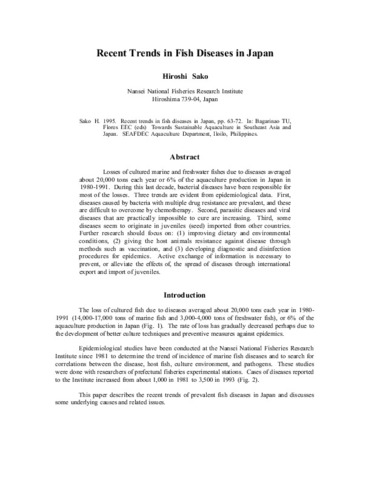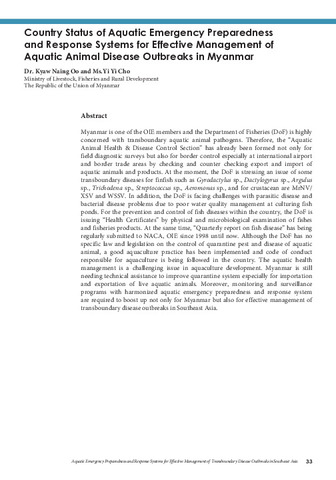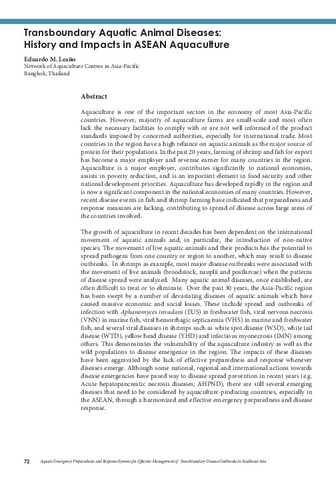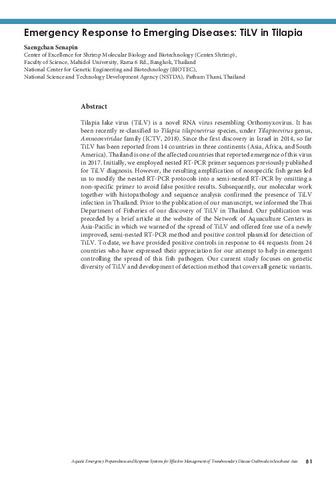Recent trends in fish diseases in Japan
- Global styles
- MLA
- Vancouver
- Elsevier - Harvard
- APA
- Help
Share
抄録
Losses of cultured marine and freshwater fishes due to diseases averaged about 20,000 tons each year or 6% of the aquaculture production in Japan in 1980-1991. During this last decade, bacterial diseases have been responsible for most of the losses. Three trends are evident from epidemiological data. First, diseases caused by bacteria with multiple drug resistance are prevalent, and these are difficult to overcome by chemotherapy. Second, parasitic diseases and viral diseases that are practically impossible to cure are increasing. Third, some diseases seem to originate in juveniles (seed) imported from other countries. Further research should focus on: (1) improving dietary and environmental conditions, (2) giving the host animals resistance against disease through methods such as vaccination, and (3) developing diagnostic and disinfection procedures for epidemics. Active exchange of information is necessary to prevent, or alleviate the effects of, the spread of diseases through international export and import of juveniles.
Suggested Citation
Sako, H. (1995). Recent trends in fish diseases in Japan. In T. U. Bagarinao & E. E. C. Flores (Eds.), Towards Sustainable Aquaculture in Southeast Asia and Japan: Proceedings of the Seminar-Workshop on Aquaculture Development in Southeast Asia, Iloilo City, Philippines, 26-28 July, 1994 (pp. 63-72). Tigbauan, Iloilo, Philippines: Aquaculture Department, Southeast Asian Fisheries Development Center.
Type
Conference paperISBN
971851127XCollections
- ADSEA '94 [21]
Related items
Showing items related by title, author, creator and subject.
-
Country status of aquatic emergency preparedness and response systems for effective management of aquatic animal disease outbreaks in Myanmar
Oo, Kyaw Naing; Cho, Yi Yi (Aquaculture Department, Southeast Asian Fisheries Development Center, 2019)Myanmar is one of the OIE members and the Department of Fisheries (DoF) is highly concerned with transboundary aquatic animal pathogens. Therefore, the Aquatic Animal Health & Disease Control Section has already been ... -
Transboundary aquatic animal diseases: History and impacts in ASEAN aquaculture
Leaño, Eduardo M. (Aquaculture Department, Southeast Asian Fisheries Development Center, 2019)Aquaculture is one of the important sectors in the economy of most Asia-Pacific countries. However, majority of aquaculture farms are small-scale and most often lack the necessary facilities to comply with or are not well ... -
Emergency response to emerging diseases: TiLV in tilapia
Senapin, Saengchan (Aquaculture Department, Southeast Asian Fisheries Development Center, 2019)Tilapia lake virus (TiLV) is a novel RNA virus resembling Orthomyxovirus. It has been recently re-classified to Tilapia tilapinevirus species, under Tilapinevirus genus, Amnoonviridae family (ICTV, 2018). Since the first ...






